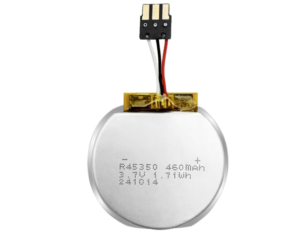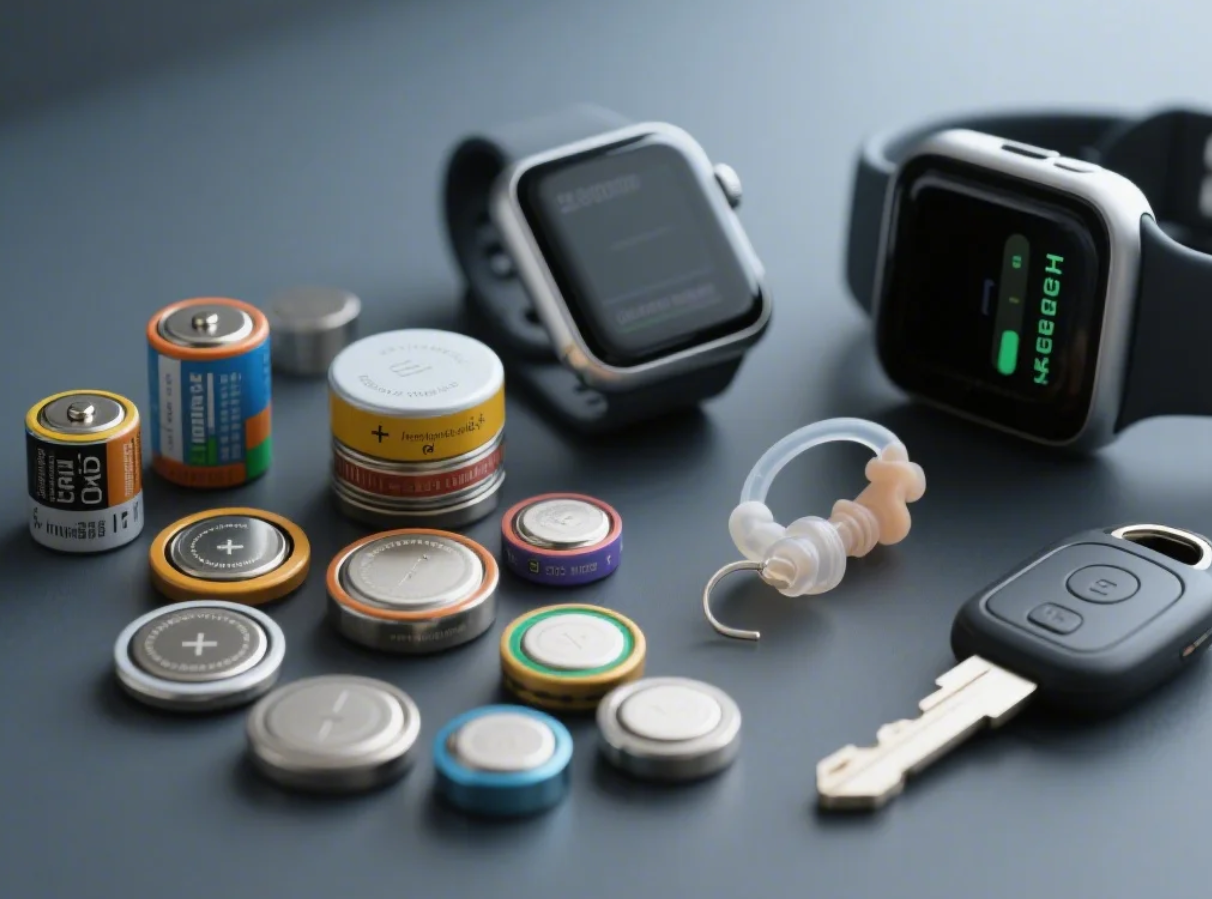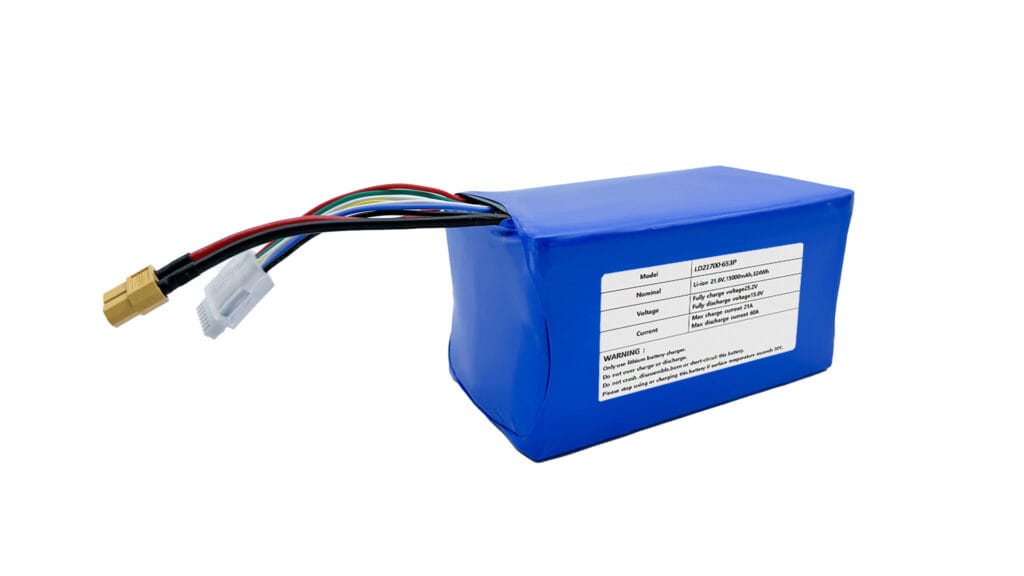Giderek daha mobil ve birbirine bağlı hale gelen dünyamızda, günlük hayatımıza sorunsuz bir şekilde entegre olan çok sayıda taşınabilir elektronik cihaza güveniyoruz. Bileğimizdeki kondisyonumuzu takip eden akıllı saatlerden sağlığımızı güvence altına alan tıbbi cihazlara ve erişimimizi sağlayan anahtarlıklara kadar, bu aygıtların ortak ve genellikle göz ardı edilen bir güç kaynağı var: küçük yuvarlak pil. Madeni para veya düğme hücreler olarak da bilinen bu mütevazi diskler, temel teknolojimizin çalışmasını sağlayan isimsiz kahramanlardır.
Küçük Yuvarlak Akülerin Temellerini Anlamak
Kompakt, düz ve dairesel tasarımlarıyla karakterize edilen küçük yuvarlak piller, düşük güçlü elektronik cihazlara doğru akım sağlayan elektrokimyasal güç kaynaklarıdır. "Madeni para hücresi" ve "düğme hücresi" terimleri genellikle birbirinin yerine kullanılsa da, genellikle çapları birkaç milimetre ile yaklaşık 20-30 milimetre ve kalınlıkları 1 ila 5 milimetre arasındadır.
Bu piller, iyonların hareketini kolaylaştıran iletken bir ortam olan elektrolit ile ayrılmış iki elektrot (bir anot (negatif terminal) ve bir katot (pozitif terminal)) içeren temel elektrokimyasal prensiplere dayalı olarak çalışır. Bu bileşenler arasındaki kimyasal reaksiyon, bağlı cihaza güç sağlamak için harici bir devre üzerinden akan elektronlar üretir.
Küçük yuvarlak akülerin çok yönlülüğü, yapımlarında kullanılan ve her biri farklı özellikler sunan çeşitli kimyasal bileşimlerden kaynaklanmaktadır:
- Lityum Madeni Para Hücreleri (CR serisi): Anot malzemesi olarak lityum kullanan bu piller yüksek enerji yoğunluğuna, uzun raf ömrüne (yılda yaklaşık 1%'lik düşük kendi kendine deşarj oranı nedeniyle tipik olarak yaklaşık 10 yıl) ve istikrarlı bir voltaj çıkışına (genellikle 3V) sahiptir. Bilgisayar anakartları (CMOS piller), anahtarlıklar ve bazı tıbbi cihazlar gibi uzun süreler boyunca tutarlı güç gerektiren cihazlar için idealdir. Yaygın örnekler arasında her yerde bulunan CR2032, CR2025 ve CR2016Rakamlar boyutlarını gösterir (örneğin, CR2032 20 mm çapında ve 3,2 mm kalınlığındadır).
- Gümüş Oksit Piller (SR serisi): Sabit deşarj voltajları (yaklaşık 1,55V) ve boyutlarına göre nispeten yüksek kapasiteleri ile bilinen gümüş oksit piller, saatler, işitme cihazları ve bazı tıbbi aletler gibi tutarlı bir güç kaynağı gerektiren düşük drenajlı uygulamalar için çok uygundur. Yaygın türleri şunlardır SR44 ve SR626.
- Alkalin Manganez Dioksit Piller (LR/AG serisi): Bunlar, hesap makineleri, oyuncaklar ve bazı uzaktan kumandalar gibi düşük ila orta düzeyde tükenen cihazlar için uygun maliyetli bir seçenektir. Tipik olarak 1,5V'luk bir voltaj sunarlar. Yaygın örnekler şunlardır LR44 (AG13 olarak da bilinir) ve LR41.
- Çinko Hava Aküleri (PR serisi): Bu piller havadaki oksijeni reaktan olarak kullanır ve çok yüksek bir enerji yoğunluğu sunar. Öncelikle işitme cihazlarında kullanılırlar ve çalışmak için havaya maruz kalmaları gerekir. Voltajları tipik olarak 1,4V civarındadır.
- Lityum İyon Düğme Hücreler (LIR serisi): Birincil (şarj edilemeyen) lityum CR serisinin aksine, LIR piller şarj edilebilir. Tüm uygulamalarda daha az yaygın olmakla birlikte, şarj edilebilir Bluetooth izleyiciler ve bazı yüksek drenajlı giyilebilir cihazlar gibi bazı özel cihazlarda bulunurlar. Voltajları tipik olarak 3,6V veya 3,7V civarındadır.
İsimlendirmenin Şifresini Çözmek: Boyut Kodları ve Ne Anlama Geldikleri
Küçük yuvarlak pillerin üzerindeki şifreli gibi görünen kodları anlamak, doğru yedek parçayı seçmek için çok önemlidir. Uluslararası IEC standardı ortak bir adlandırma kuralı sağlar. Örnek olarak popüler "CR2032 "yi inceleyelim:
- İlk Mektup: Kimyasal sistemi belirtir.
- C: Lityum Manganez Dioksit
- L: Alkali Manganez Dioksit
- S: Gümüş Oksit
- P: Çinko-Hava
- LIR: Şarj Edilebilir Lityum-İyon
- Rakamlar: Tipik olarak pilin fiziksel boyutlarını gösterir. İlk iki rakam genellikle milimetre cinsinden çapı temsil eder ve son iki rakam milimetrenin onda biri cinsinden kalınlığı gösterir.
- CR2032 için "20" yaklaşık 20 mm çap ve "32" 3,2 mm kalınlık anlamına gelir.
Benzer şekilde, LR44 pil 11,6 mm çapında ve 5,4 mm kalınlığında bir Alkalin Manganez Dioksit kimyasını gösterir (ancak kalınlık kodlaması bazen alkalin tipler için üreticiler arasında biraz farklılık gösterebilir). Tam yedek pili seçtiğinizden emin olmak için her zaman cihaz kılavuzuna veya orijinal pilin üzerindeki işarete bakın. Yanlış boyut veya voltaj kullanılması cihazın arızalanmasına ve hatta hasar görmesine neden olabilir.
Küçük Yuvarlak Aküleri Seçerken Dikkat Edilmesi Gereken Temel Hususlar
Taşınabilir bir cihaz için uygun küçük yuvarlak pilin seçilmesi birkaç kritik hususu içerir:
- Gerilim Gereksinimleri: Bu çok önemlidir. Akünün voltajı cihazın belirtilen voltajıyla eşleşmelidir. Farklı voltajda bir pil kullanılması cihaza zarar verebilir veya doğru çalışmasını engelleyebilir.
- Kapasite (mAh): Miliamper-saat (mAh) cinsinden ölçülen kapasite, pilin ne kadar şarj depolayabileceğini gösterir ve böylece cihazın değiştirilmesi gerekmeden önce ne kadar süre çalışacağını etkiler. Daha yüksek bir mAh derecesi genellikle daha uzun pil ömrü anlamına gelir.
- Deşarj Oranı: Farklı cihazlar farklı oranlarda güç çeker. Bazıları gücü yavaş ve istikrarlı bir şekilde tüketirken (düşük deşarj), diğerleri enerji patlamalarına ihtiyaç duyar (yüksek deşarj). Cihazın tipik deşarj oranına uygun bir pil seçmek, optimum performans ve uzun ömür için önemlidir.
- Kullanım Ömrü ve Raf Ömrü: Hem cihazdaki pilin çalışma ömrünü hem de raf ömrünü (önemli kapasite kaybı olmadan kullanımdan önce ne kadar süre saklanabileceğini) göz önünde bulundurun. Lityum piller genellikle mükemmel raf ömrüne sahipken, alkalin piller daha sınırlı bir saklama süresine sahiptir.
- Çalışma Sıcaklığı: Aşırı sıcaklıklar pil performansını ve ömrünü etkileyebilir. Pilin belirtilen çalışma sıcaklığı aralığının cihazın amaçlanan kullanım ortamıyla uyumlu olup olmadığını kontrol edin.
- Güvenlik Özellikleri: Özellikle lityum piller için, sızıntı veya termal kaçak gibi sorunları önlemek için güvenlik standartlarına uyulduğunu gösteren saygın üreticiler ve sertifikalar arayın.
- Değiştirme Sıklığı: Değiştirilmesi zor pillere sahip cihazlar için, başlangıç maliyeti biraz daha yüksek olsa bile daha uzun ömürlü bir tür tercih edilebilir.
Taşınabilir Cihazlar Üzerindeki Uygulamalar
Küçük yuvarlak pillerin çok yönlülüğü ve kompakt boyutları, onları çok çeşitli taşınabilir cihazlar için vazgeçilmez güç kaynakları haline getirmiştir:
- Giyilebilir cihazlar: Akıllı saatler, fitness takip cihazları ve Bluetooth kulaklıklar, sürekli güç sağlamak için küçük boyutlarına ve nispeten uzun ömürlerine güveniyor. Lityum polimer piller de esnek tasarım potansiyelleri nedeniyle bu sektörde kendilerine yer bulmaktadır.
- Tıbbi Cihazlar: İşitme cihazları, glikoz ölçüm cihazları ve hatta kalp pilleri gibi implante edilebilir cihazlar, güvenilirlikleri ve istikrarlı güç çıkışları için genellikle gümüş oksit veya özel lityum türlerini tercih eden küçük yuvarlak piller kullanmaktadır.
- Anahtarlıklar ve Kumandalar: Araba anahtarları, garaj kapısı açıcıları ve çeşitli elektronik cihazların uzaktan kumandaları, uzun raf ömürleri ve tutarlı güç dağıtımları nedeniyle genellikle lityum madeni para hücrelerini kullanır.
- Tüketici Elektroniği: Hesap makineleri, dijital termometreler, küçük LED ışıklar ve elektronik teraziler, kullanılabilirlikleri ve uygun maliyetleri nedeniyle genellikle alkalin veya lityum düğme pillerle çalışır.
- Bilgisayar Bileşenleri: CMOS (Complementary Metal-Oxide Semiconductor) piller, tipik olarak CR2032 gibi lityum madeni para hücreleri, bilgisayar kapatıldığında BIOS ayarlarını ve sistem saatini koruyarak anakarta yedek güç sağlar.
- IoT Cihazları ve Sensörler: Kablosuz sensörler, Bluetooth takip cihazları ve akıllı ev cihazları, kompakt boyutları ve düşük güç uygulamalarında uzun süre güç sağlama yetenekleri nedeniyle genellikle küçük yuvarlak piller kullanır.
Küçük Yuvarlak Pillerin Geleceği
Daha küçük, daha güçlü ve daha uzun ömürlü bataryalara olan talep, bu alandaki yenilikleri teşvik etmeye devam ediyor. Ufukta birkaç umut verici gelişme var:
- Katı Hal Aküleri: Sıvı elektroliti katı bir elektrolitle değiştiren bu yeni nesil bataryalar daha fazla güvenlik, daha yüksek enerji yoğunluğu ve potansiyel olarak daha uzun ömür vaat ediyor. Yaygın küçük yuvarlak pil uygulamaları için hala geliştirme aşamasında olsalar da, önemli bir potansiyele sahiptirler.
- Gelişmiş Lityum-İyon Kimyaları: Devam eden araştırmalar, lityum-iyon pillerin enerji yoğunluğunu, çevrim ömrünü ve güvenliğini iyileştirmeye odaklanmaktadır; bu da daha verimli şarj edilebilir düğme hücrelerine dönüşebilir.
- Minyatürleştirme ve Esnek Tasarımlar: Taşınabilir cihazlar daha da küçüldükçe ve giysilere veya esnek malzemelere daha fazla entegre oldukça, pil teknolojisindeki ilerlemeler, potansiyel olarak ince film ve esnek pil teknolojilerinden yararlanarak bu form faktörlerine uyan güç kaynakları oluşturmak için çok önemli olacaktır.
- Sürdürülebilir Malzemeler ve Geri Dönüşüm: Pil üretimi ve bertarafının çevresel etkilerini ele almak için daha çevre dostu pil malzemeleri geliştirme ve geri dönüşüm süreçlerini iyileştirme çabaları artmaktadır.
Sonuç
Küçük yuvarlak piller, küçücük boyutlarına rağmen, modern yaşamlarımızın ayrılmaz bir parçası haline gelen çok sayıda taşınabilir cihazın arkasındaki vazgeçilmez güç kaynağıdır. Temel ilkelerini, farklı kimyaların ve boyut kodlarının nüanslarını ve seçim için dikkate alınması gereken temel hususları anlamak hem tüketiciler hem de işletmeler için çok önemlidir. Teknoloji gelişmeye devam ettikçe, küçük yuvarlak pil teknolojisindeki yenilikler de gelişecek ve yarının taşınabilir cihazları için daha da verimli, güvenli ve çok yönlü güç çözümleri vaat edecektir.
Küçük yuvarlak piller, kompakt ve güvenilir güç gerektiren çok çeşitli cihazlarda vazgeçilmezdir. Tıbbi cihazlardan tüketici elektroniğine kadar her alandaki uygulamalarla, küçük yuvarlak pillere yönelik pazar talebi artmaya devam ediyor. Yenilik, güvenlik ve performansa odaklanan Lan Dazzle, işinize özel en iyi küçük yuvarlak pilleri sunma konusunda güvenilir bir ortak olarak öne çıkıyor, herhangi bir ihtiyacınız varsa, bizimle iletişime geçmekten çekinmeyin info@landazzle.com veya ziyaret edin landazzle.com.

SSS
- Bozuk para hücresi ile düğme hücreli pil arasındaki fark nedir? Genellikle birbirinin yerine kullanılır, ancak genellikle küçük, düz, yuvarlak pilleri ifade eder. "Bozuk para hücresi" biraz daha büyük çapları ima edebilirken, "düğme hücresi" çapa göre çok küçük ve kalın olabilir. Terimler kesin olarak tanımlanmamıştır.
- Cihazım için hangi küçük yuvarlak pili satın alacağımı nasıl bilebilirim? Eski pilin kodunu (örn. CR2032) kontrol edin veya cihazın kılavuzuna bakın. Voltaj ve boyutun eşleştiğinden emin olun.
- Bir madeni para pilinin üzerindeki kod ne anlama gelir (örneğin, CR2032)? Harf kimyasal maddeyi (Lityum için C), ilk iki rakam milimetre cinsinden yaklaşık çapı (20 mm) ve son iki rakam milimetrenin onda biri cinsinden kalınlığı (3,2 mm) gösterir.
- Küçük yuvarlak piller genellikle ne kadar dayanır? Pil ömrü cihazın güç tüketimine, pilin kapasitesine (mAh) ve kimyasına bağlı olarak büyük ölçüde değişir. Raf ömrü de kimyaya göre farklılık gösterir, lityum genellikle depolamada en uzun süre dayanır.
- Küçük yuvarlak piller şarj edilebilir mi? Evet, bazı lityum-iyon düğme hücreler (LIR serisi) şarj edilebilir, ancak CR ve LR serisi gibi en yaygın türler birincil (şarj edilemez). Şarj edilebilir tipler özellikle etiketlenecektir.
- Küçük yuvarlak pillerle ilgili almam gereken güvenlik önlemleri nelerdir? Özellikle çocuklar için yutmanın tehlikelerini ve uygun şekilde imha ve depolamanın önemini vurgulayın. Bunları küçük çocukların ulaşamayacağı yerlerde saklayın, asla yutmayın ve belirlenen toplama noktalarına sorumlu bir şekilde atın.





